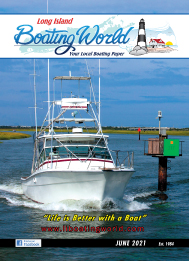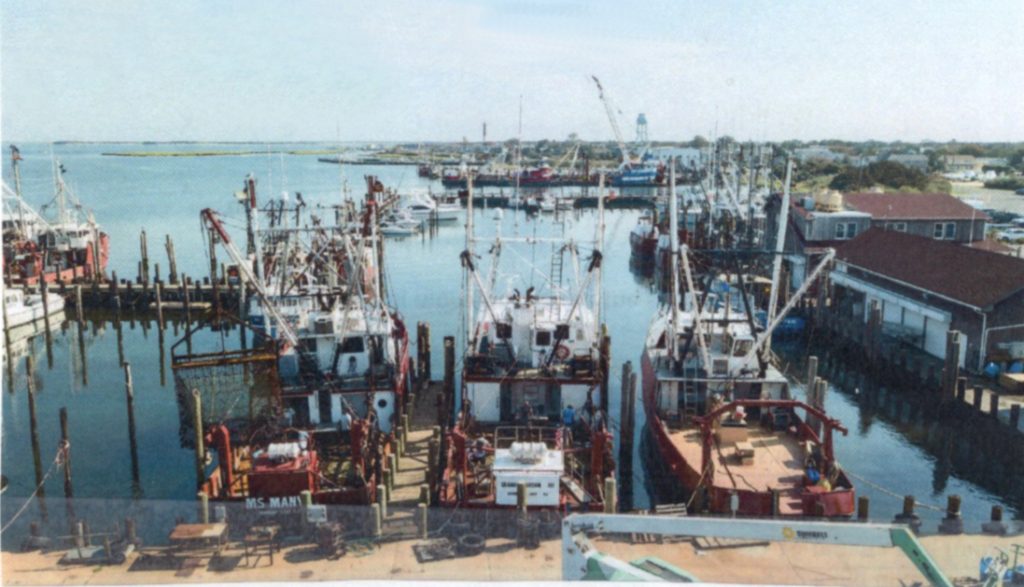
The words from some of the fishermen, “Just barely.” The commercial fishermen and those in allied industries hope the return to near-normal this summer and the help they anticipate from the government will replenish supplies, bring back employees and bring back the market they’ve lost in the restaurants now starting to re-open.
Over 100 different species of finfish and shellfish are harvested from New Jersey waters in good times and sold all over the world. Sushi bars in Tokyo sell tuna caught in New Jersey. When there are Japanese commercial fishermen catching tuna close to home and the sushi bars are known to only take top quality tuna, why are they buying Jersey tuna? The Jersey fishermen have learned how the Japanese want their fish delivered and are willing to give tuna special handling that the sushi bars look for.

New Jersey’s commercial fishing industry has always been a major factor in their economy and early on they developed the seaports to accommodate their fishing business. The six major fishing ports were all at one time Native American tribal territories where finfish and shellfish were harvested. The communities were taken over by European settlers and the fishing morphed into selling fish to nearby communities, building the boats needed for fishing and the tourist business followed.
Of the six major ports, two have organized fisherman’s co-ops. In the 1950s a co-op was started in Belford where dock space, ice and marketing are provided. They also provide space for a market and a restaurant. The other co-op at Point Pleasant Beach has dock space for the boats that return every day – the clam dredges, day boat trawlers and gill net boats. A local upscale food store and restaurant now have a branch on the co-op dock. They also provide an ice machine, cold storage, a truck loading station and retail store. The co-op makes things happen for fishermen who in normal times would have trouble finding enough hours in a day to fish and have energy left to think about marketing their product.
If you like fresh fish – really fresh fish, just off the boat fresh – you might want to try eating at the Shore Fresh Restaurant on the co-op pier where lobster rolls with generous portions of meat come with a ton of hand cut fries and freshly made cold slaw for $9.99. If you shop at the co-op market, sea scallops are $15 a pound.
Not a co-op, Viking Village at the northern end of Long Beach Island at Barnegat Light, is a loose association of all the boats docking there, retail businesses and the Chamber of Commerce. The manager of Viking Village, Ernie Panacek, says when you “compete with more people in the business you need a better, higher quality product.” The need for the fisherman to return sooner with a higher quality product has meant more and shorter trips. Bringing the catch home faster gives consumers a higher quality product. The scenario of faster trips, further out, puts emphasis on larger, safer boats. with the latest and best fast freeing units that can bring home what consumers want. Viking Village combines resort communities like Harvey Cedars and Loveladies on Long Beach Island with the commercial activity on the northern end and the Chamber of Commerce oversees tours of the commercial dock and fisherman’s efforts to ensure the sustainability of the fisheries.
The largest of New Jersey’s six ports is Cape May. Back in the late 1600s a few New Englanders came to Cape May looking for whales and decided to stay. They settled in what had been territory of the Lenape Indians. When the families moved in they found food immediately by fishing the local waters. They were able to catch enough to sell in southern cities and areas west of Cape May. With over 100 miles of coastline Cape May is currently New Jersey’s largest seaport and sixth largest in the country.
Atlantic City, formerly known as Absecon, is thought of today as a resort/casino town, but it still ranks high as a seaport, providing finfish and shellfish. They harvest surf clams and ocean quahogs as well as hard clams and crabs.
Port Norris is thought of as oyster country. When you grow oysters and there is no market for them, what do you do with the ones that have grown to optimum size? The oysters are ready and you have to start thinking outside the box where to move them to make room for the start of the next season’s crop. The lucky grower may have a friend with storage space. You might consider quick-freezing half-shell oysters and putting Oysters Rockefeller together to freeze.
Boats are having to travel further to get the fish because the water in the Atlantic Ocean is warming up at a faster rate every year. During a period from the late 1990s until 2014, fish moved every year and boats were tracked traveling a total of 250 miles north to follow the fish. “Go big or go home” would apply to the boats needed to go further and further from home where there are fewer boats that could help in an emergency. Bigger (65 feet) vessels can stay out longer and could be equipped with the latest fast freeze units.
Because of problems of unnecessary governmental restrictions and unfair allocations not based on current numbers, states are competing with each other for fish, some with help from their own proactive government. North Carolina boats now work in New Jersey waters and have higher quotas than New Jersey boats. Since last year New Jersey herring fishermen are facing a new law forcing them to pay for at-sea monitoring that will cost each boat $700 a day for an observer who at best will be in the way of the working crew and at worst, whose life might be in danger or who might need to be rescued.
So much of New Jersey’s economy is based on commercial fishing, allied fisheries and fringe economies – the small businesses down at the shore, the boardwalk stores, small surf shops, motels, restaurants, bait and tackle stores, small boat shops, boat rentals, how can the government even find all the people whose businesses need help?
Those who speak for the commercial fisherman, people like Jim Lovgren, a member of the Point Pleasant Beach Co-op who has been quoted in National Fisherman and other papers and magazines opposing the need for observers on commercial fishing boats. He questions what fishing is doing under the US Commerce Department.
The fisherman are hoping that the New York City residents who used to eat out three to four times a week resume their old habits and eat fish. If the fishermen read the New York Times Real Estate section on Sundays, it seems a lot of the residents who have the income level to eat out often in New York City are no longer there, having moved out to the east end of Long Island or to Florida.
Many of the small businesses in New Jersey were disappointed after being promised financial help from the government after Super Storm Sandy and not receiving. I think this time will be different.
